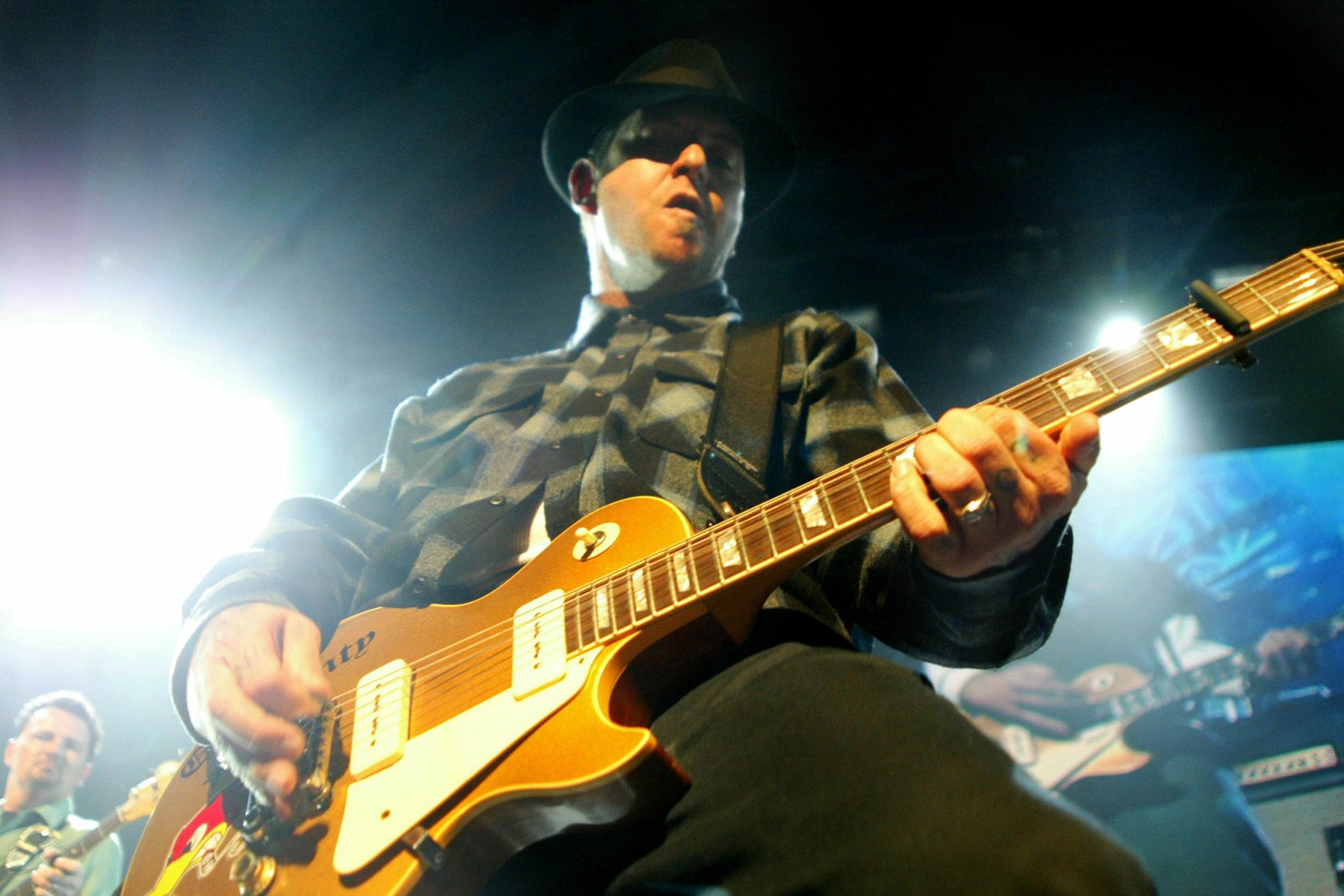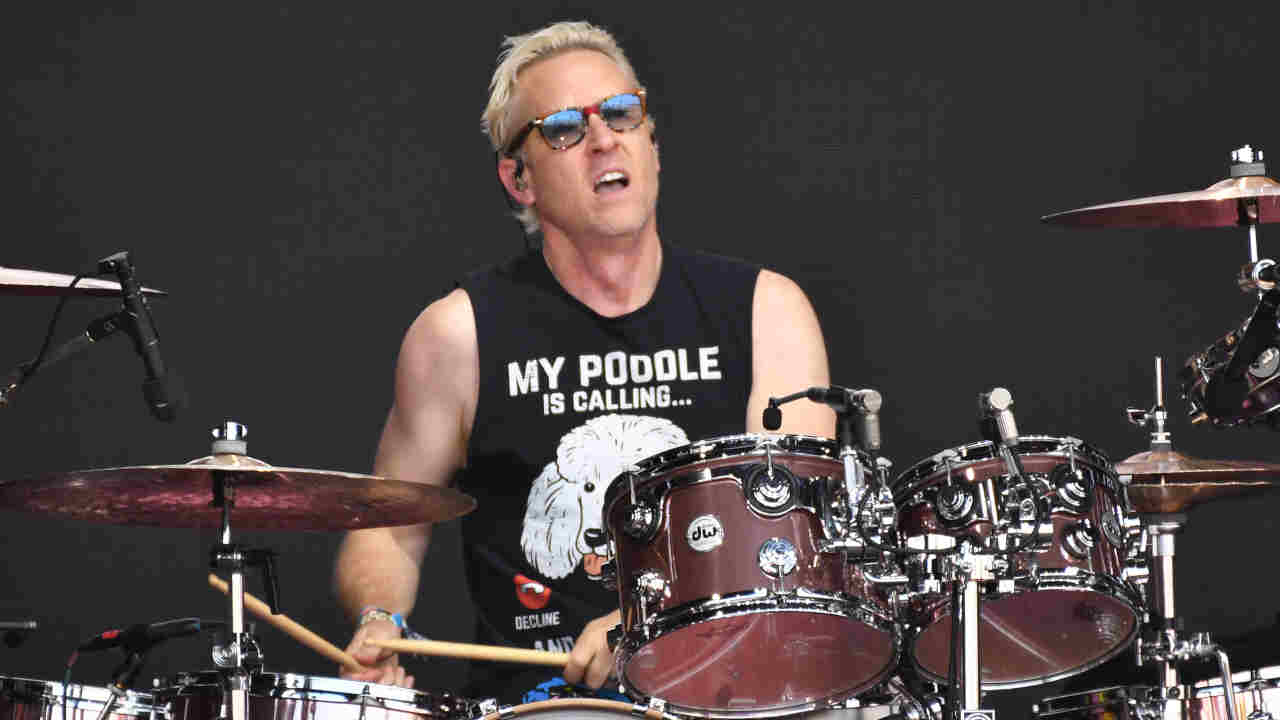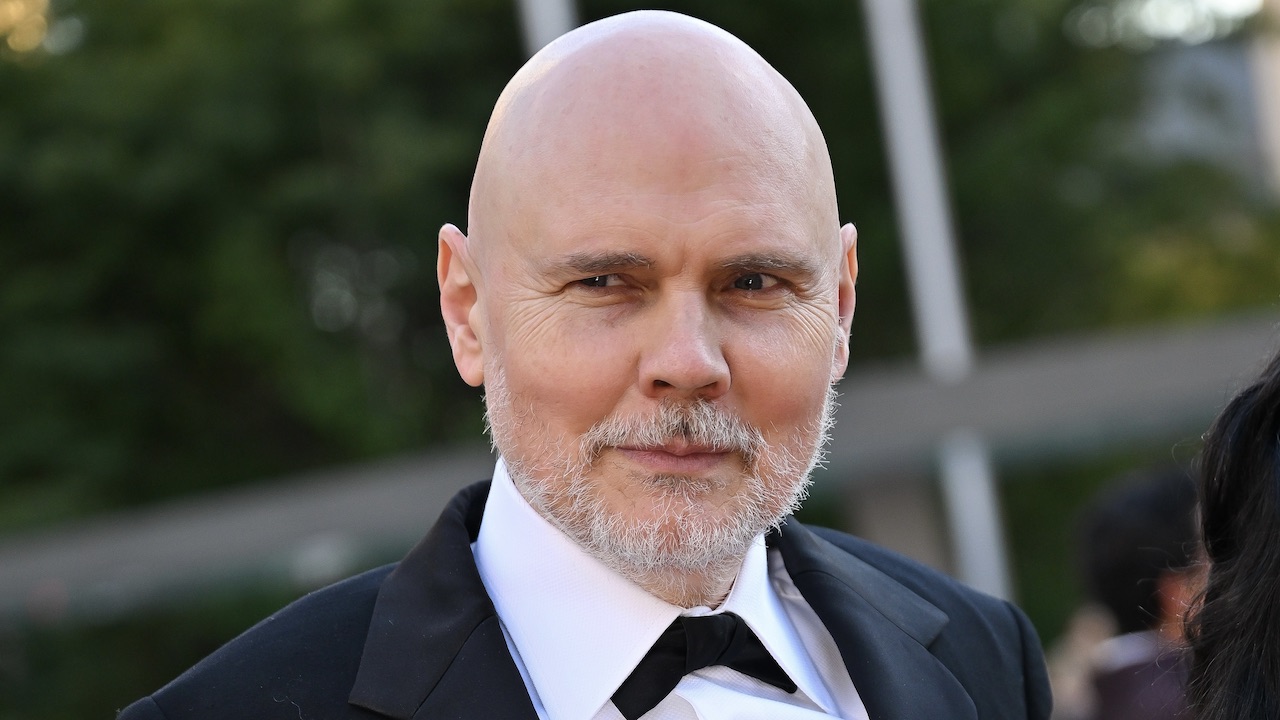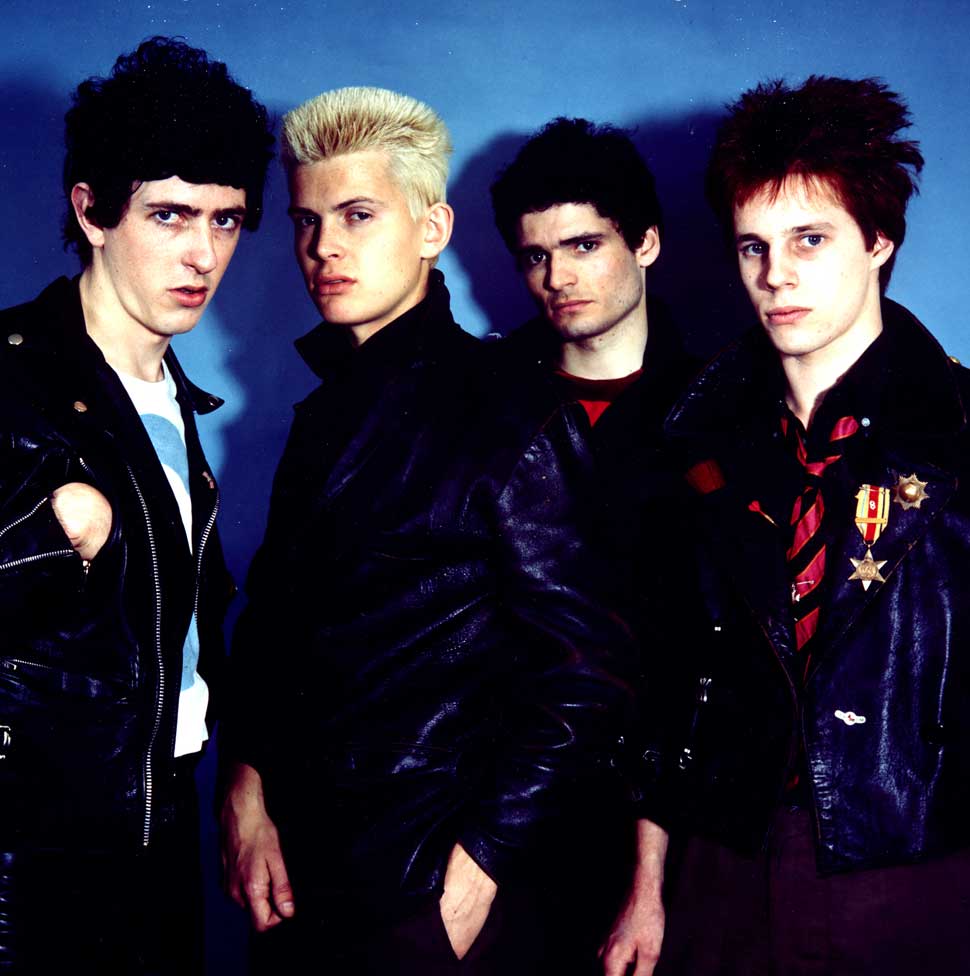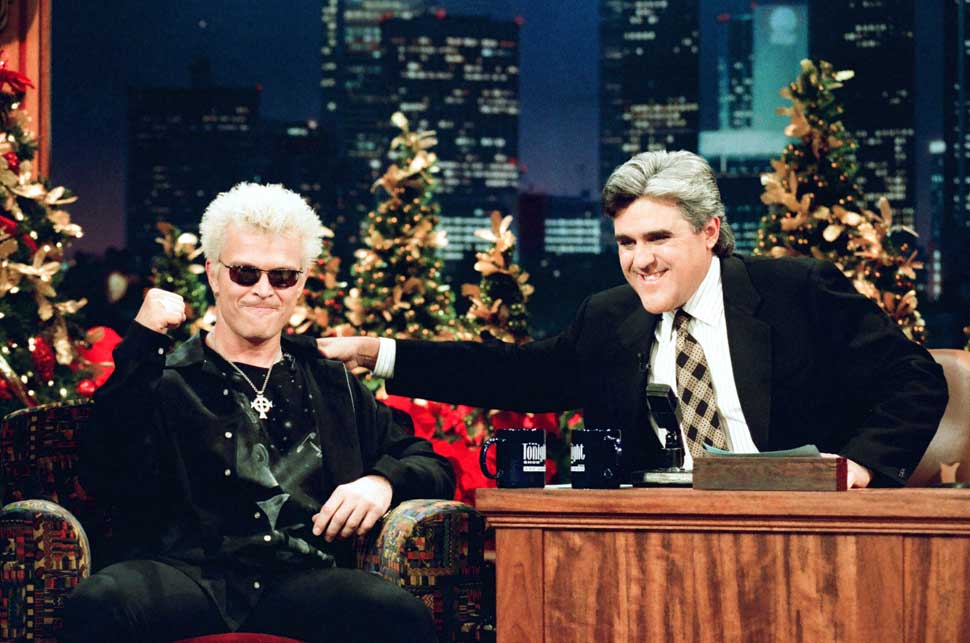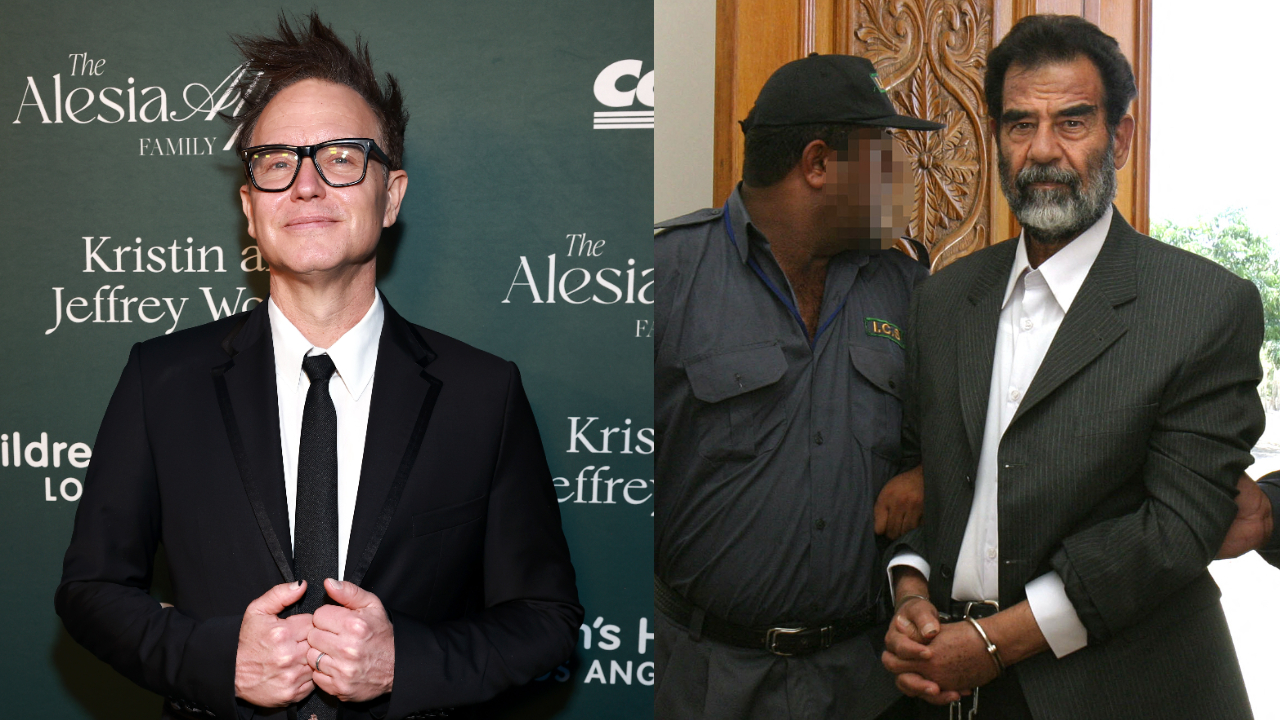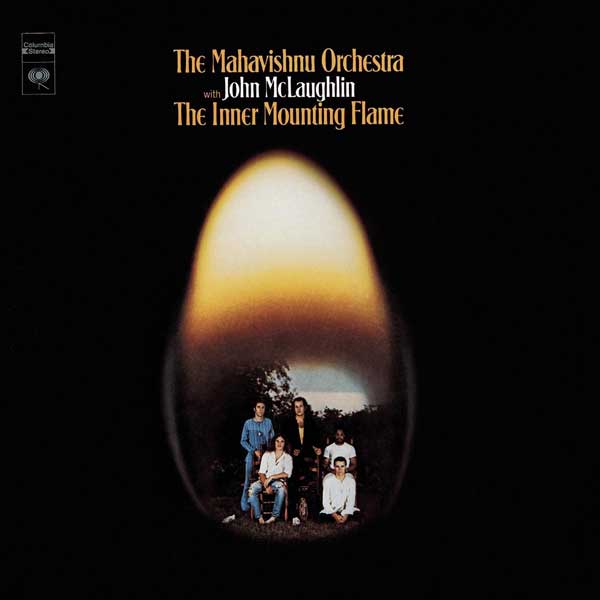Social Distortion is proof that sometimes, you can go home again.
As Mike Ness, frontman for the Orange County punk rock legends revealed, it wasn’t always that way, when it came to Fullerton, California, the hometown where he grew up. “Let us not ask what the city can do for us, but what we can do for the city,” he muses in the foreword to Tearing Down the Orange Curtain: How Punk Rock Brought Orange County to the World. “Forty years ago, they might have wanted to lock me up and throw away the key. But things change. And now I got a key, a key to the city I grew up in.”
Social Distortion helped to lead the charge when it came to the eventual explosion of the Orange County music scene. By the end of the ’90s, fans were hearing the music of Orange County bands like the Offspring, No Doubt, Sublime all over the radio and MTV. As the musicians detail in the pages of Tearing Down the Curtain, Ness and the members of Social D offered important influence that there was a way to find greater exposure without having to compromise and sell your soul to the commercial gods. “They had a lot of hits,” No Doubt drummer Adrian Young explained. “That still felt like that was legit. They meant what they were doing and you could tell.”
The band’s music was making impact with musicians outside of Orange County as well. The music — and specifically, the characters that Ness wrote into the lyrics, was relatable. “The songs had depth and space to them,” Brian Fallon of the Gaslight Anthem recognizes now. By the time “Bad Luck” caught significant airplay, peaking at No. 2 on Billboard’s Modern Rock charts, it would be an important defining moment, but it was anything but overnight, as Ness pointed out on stage in 1992 while promoting that year’s Somewhere Between Heaven and Hell, calling “Bad Luck,” the first offering, “the one that all the radio stations finally got hip to Social D. It only took them twelve f–king years.”
Watch Social Distortion’s ‘Bad Luck’ Video
Behind the scenes, it was no walk in the park. Social Distortion realized they were not a priority at their label and had to scrape for any sort of funding from Epic Records, shooting three videos for the album, including “Bad Luck,” in a single day for a total cost of $29,000 dollars that was eventually reimbursed by the label at a later point.
Ness started putting the pieces of what would become Social Distortion together in 1978, which means that it’s been close to 50 years now since those formative days and even with the amount of success that the band has enjoyed, it still feels like they’re severely underrated. “[We’ve talked about] how underrated and under-appreciated Social Distortion is,” Tearing Down the Curtain co-author Daniel Kohn says during an interview on the UCR Podcast. “You get it, but it feels like the Rock and Roll Hall of Fame and people like that don’t get it. Mike as a songwriter, the hard scrabble tales, the honesty and authenticity, if it wasn’t for that, there would be nothing like [the sound of what Social Distortion has done]. There’s so many bands he influenced. When Bruce Springsteen, Eddie Vedder and Gaslight Anthem are calling you this incredible songwriter, you’re doing something right.”
“Mike’s too humble to admit any of this, how proud he is of that, to have these co-signs. Neil Young is another one. Neil played a huge part in helping Social Distortion become what they became at a very critical point in their career,” he continues. “In 1990, that tour, when you put Sonic Youth, Neil Young and Crazy Horse and Social Distortion together, it makes no sense on paper. Yet, as Thurston Moore said, it didn’t just work, but it was one of the highlights of Sonic Youth’s career, playing with them and him getting to know Mike and [guitarist] Dennis [Danell]. There’s so many throughlines here to so many different things about Social Distortion specifically. They’re still a huge band, especially here [in California], but in other parts of the country, they’re an ‘if you know, you know’ kind of band and their following is extremely dedicated.”
Following the Path From Journey to Ramones and Punk Rock
That’s just one corner of the story that authors Nate Jackson and Kohn unpack in depth in the pages of Tearing Down the Orange Curtain and it offers fascinating insights into the formative years of bands that are now legends of alternative and mainstream rock. For No Doubt drummer Adrian Young, his musical travels began with receiving copies of Journey’s Escape and Ramones’ Road to Ruin from his father and eventually, he fully found his way to punk rock, becoming a fan of the Vandals and T.S.O.L. in particular. By the time No Doubt was playing their own shows, they would get important early support from bands like Fishbone, with Angelo Moore spending time hanging out at Eric and Gwen Stefani’s house.
READ MORE: Ramones Albums Ranked
As the Offspring prepared to issue 1992’s Ignition, their debut on Epitaph Records, though they were one album away from 1994’s appropriately named Smash — and Ignition’s “Kick Him When He’s Down” would eventually receive a healthy amount of radio airplay, they too — much like Social Distortion had done — were fighting for survival. The band refused to give up, even as they were playing new songs from the forthcoming album to sparse crowds in the area. Each band’s origin story, as it turns out, had a lot of common ground.
Watch the Offspring’s ‘Self-Esteem’ Video
“As I was coming up, [Social Distortion, the Offspring, Sublime and No Doubt], those are the bands that were on the radio,” Jackson says during the same interview with UCR. “Those are the bands you heard everywhere and you still hear them. It was part of the cultural phenomenon of that particular point in the late ’80s and ’90s that turned Orange County into this worldwide phenomenon. As fans, those are the first bands that we probably heard. I know that in a way, growing up and developing as a person with musical tastes, you start to look at a band like Sublime and all of the reference points they have, you start to [wonder], all of these bands they’re referencing, where are they from? You’ve got to dig into the other layers. You hear about the Vandals and Adolescents and all of the sudden, you’re like, this stuff came before [the other bands I already like], oh shit, okay! This stuff’s kind of cooler in a way, because I’m not being bombarded with it in shopping malls.”
READ MORE: The Offspring Albums Ranked
“This is what you consider, I think, as someone who’s growing [up with] music, this is the grassroots stuff,” he continues. “Every one of the bands on the cover [of Tearing Down the Orange Curtain] dealt with their own form of backlash because they got so popular. I can attest to that too, because there was a time when I distanced myself from a lot of the music, because it was bombarding you all of the time. It was almost like Disneyland, you know, you’re sick of talking about it Like, f–king move on, you know? We got down to the nuts and bolts of all of these cool, like artistic bands that are different or lesser known. With the cyclical nature of things, when you reexamine some of this music decades later, you can really see it for the genius that it was at the time.”
Today, the bands persist. Social Distortion is still playing shows and has a long-gestating new album that has been taking shape, delayed in part by a battle Ness faced with cancer. No Doubt reunited at the Coachella festival last year, while Sublime eventually retooled their lineup to welcome in late singer Bradley Nowell’s son, Jakob, as their new frontman. The Offspring is set to tour this summer, anchoring a bill that also features Jimmy Eat World and New Found Glory.
It’s a saga that the Orange County bands themselves likely wouldn’t have predicted, but as Kohn points out, can be traced back to Social Distortion and Ness. “There’s a part in the book where Chris Shiflett, now of Foo Fighters, talked about seeing Social Distortion up in Santa Barbara and how everyone wanted to be like Mike an dress like him and they’d replicate him. He and Social D really kept the thing going.”
Tearing Down the Orange Curtain was released May 20. Fans can find more information about the book and upcoming events on the official Instagram.
Listen to Nate Jackson and Daniel Kohn discuss ‘Tearing Down the Orange Curtain’ on the ‘UCR Podcast’
Punk Rock’s 40 Best Albums
From the Ramones to Green Day, this is musical aggression at its finest.
Gallery Credit: Michael Gallucci

